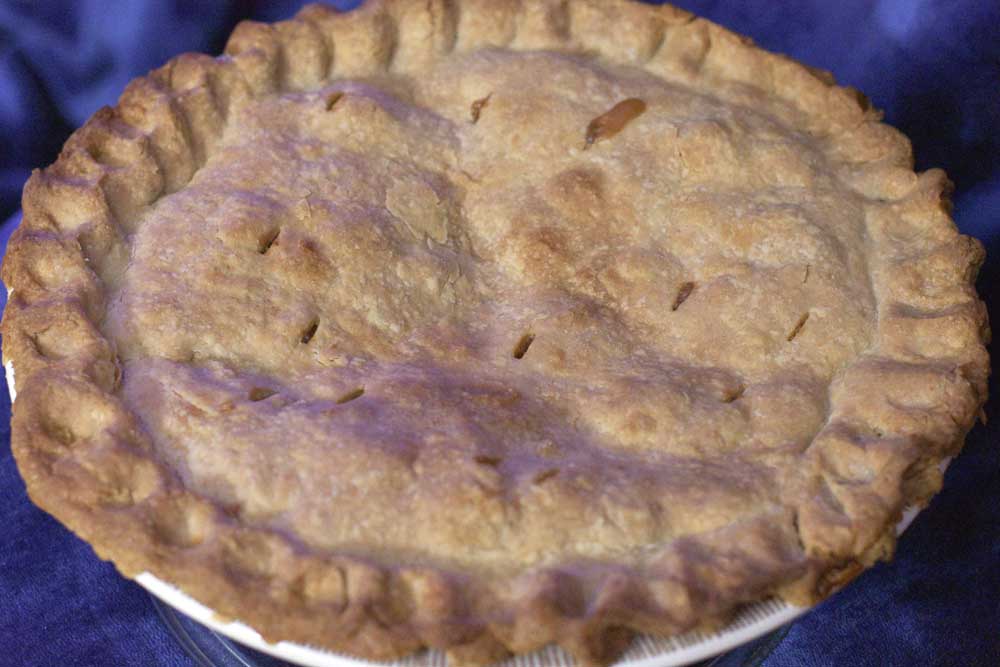Life of pie
Published 6:00 am Friday, November 30, 2018

- Ron Baldwin's traditional American apple pie.
It is my uneducated guess that one would have to search far and wide to find someone who doesn’t like pie.
America is awash in pie. If all the American pies eaten in a year were set rim to rim, they would stretch around the world with pies to spare, according to the American Pie Association. Each year, about $700 million in pie is sold in America’s grocery stores alone.
In our 242 years Americans have made pie the preferred dessert for the holiday season. Although “as American as apple pie” is a well-worn phrase, apple pie came to America from Europe with the first settlers. The pilgrims of Plymouth ate pumpkin pie on the second Thanksgiving, but pumpkin pie was not popular in America until the early 1800s.
The Greeks are credited with developing the first pie pastry, which the Romans promptly stole and spread throughout Europe. The pastry was made of flour, water and olive oil, rolled out and covered with meat and vegetables, then covered with another pastry and baked.
The pie served its main function, which was to feed a hungry, conquering army, and recipes were kept as military secrets. It is arguable that, at least in part, the armies of Rome that conquered the Mediterranean marched on pie.
Pie was the perfect military food. It could be created from ingredients obtained on the march, baked in unsophisticated ovens, deliver the heavy meat-protein punch the soldiers needed, and when it was time to leave, pies could be carried in wagons and served right after battle. Just like Sunday football.
When Roman culture rubbed off on the peoples of Northern Europe, pie started to look more like the pie we know today. Suet and lard replaced the olive oil and made it possible for the pastry to stand up when baked and hold more volume. This allowed the dish to be baked in the crust, referred to as a “coffyn,” with no support.
It should be noted that during Medieval times pie was not eaten by commoners. It was food of the gentry. The lord and his banquet guests enjoyed the fillings while the thick, heavy crusts were generally discarded and consumed by the servants and slaves. Again, these were generally meat pies.
Fruit in pie came along in roughly the 13th century. The first mention of pie in print occurred around 1560 in England, where pie sort of went crazy with the introduction of live birds — even live people — popping out from under the top crust. Even a string quartet was revealed once when a giant pie was opened at a fancy banquet in London. Imagine the impression that made.
I remember the holiday meals at my grandmother’s house in the 1950s. My mother had five siblings, and each had two or three kids. So, along with a few lonely neighbors, the crowd usually numbered around 25.
My grandmother ran the show like a field general, barking orders in her broken German-English. The main table in the dining room was set for all the adults, and the kids were scattered through the house on card tables. Grandma stood in the kitchen, near the back door and directed traffic. Aunts, uncles, cousins brought armloads of food.
As the family arrived, the pies would start to multiply on the sideboard next to the table in the dining room. One time I counted 17 pies. This is too much temptation for an 8-year-old. A pie is a kid magnet.
Grandma: “Keep fingers out of the pie.”
Me: “I’m just looking.”
Grandma: “Vie you finger purple?”





